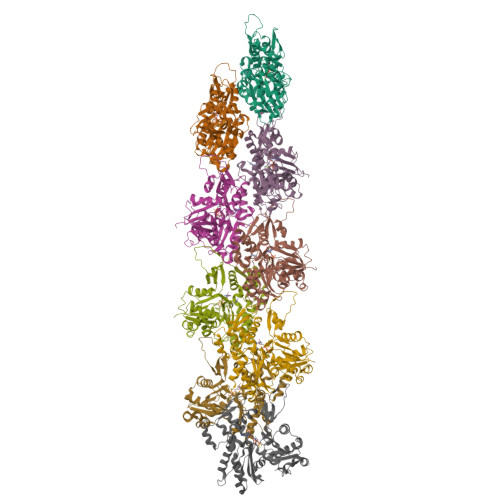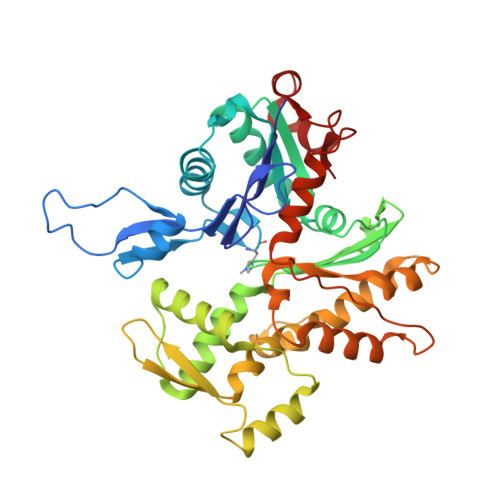Cryo-EM structures reveal how phosphate release from Arp3 weakens actin filament branches formed by Arp2/3 complex.
Chavali, S.S., Chou, S.Z., Cao, W., Pollard, T.D., De La Cruz, E.M., Sindelar, C.V.(2024) Nat Commun 15: 2059-2059
- PubMed: 38448439
- DOI: https://doi.org/10.1038/s41467-024-46179-x
- Primary Citation of Related Structures:
8UXW, 8UXX, 8UZ0, 8UZ1 - PubMed Abstract:
Arp2/3 complex nucleates branched actin filaments for cell and organelle movements. Here we report a 2.7 Å resolution cryo-EM structure of the mature branch junction formed by S. pombe Arp2/3 complex that provides details about interactions with both mother and daughter filaments. We determine a second structure at 3.2 Å resolution with the phosphate analog BeF x bound with ADP to Arp3 and ATP bound to Arp2. In this ADP-BeF x transition state the outer domain of Arp3 is rotated 2° toward the mother filament compared with the ADP state and makes slightly broader contacts with actin in both the mother and daughter filaments. Thus, dissociation of P i from the ADP-P i transition state reduces the interactions of Arp2/3 complex with the actin filaments and may contribute to the lower mechanical stability of mature branch junctions with ADP bound to the Arps. Our structures also reveal that the mother filament in contact with Arp2/3 complex is slightly bent and twisted, consistent with the preference of Arp2/3 complex binding curved actin filaments. The small degree of twisting constrains models of actin filament mechanics.
Organizational Affiliation:
Department of Molecular Biophysics and Biochemistry, Yale University, PO Box 208103, New Haven, CT, 06520-8103, USA.




















